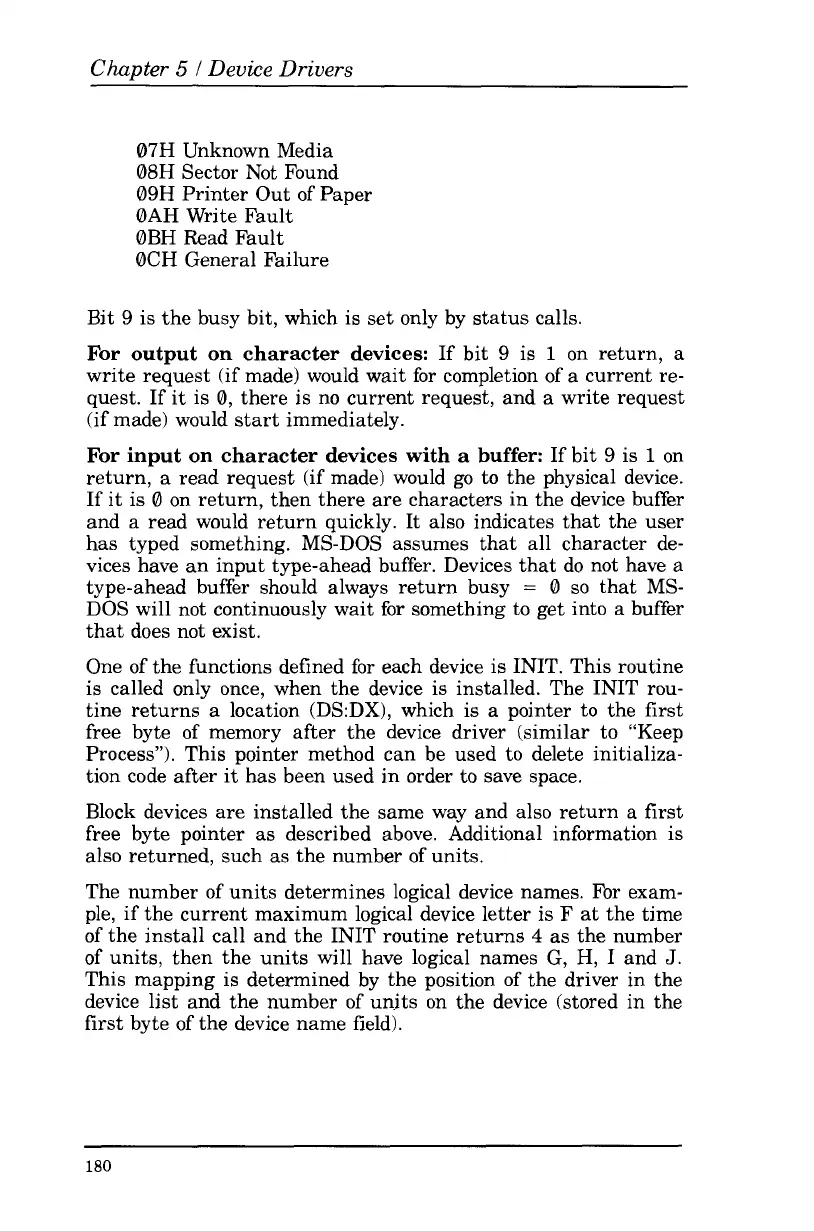Chapter
5
I
Device
Drivers
07H Unknown Media
08H Sector Not Found
09H Printer Out of Paper
OAH Write Fault
OBH Read Fault
OCH General Failure
Bit 9 is the busy bit, which is set only by status calls.
For
output on character devices:
If bit 9 is
1
on return, a
write request
(if
made) would wait for completion of
a
current re-
quest. If it is 0, there is no current request, and a write request
(if made) would
start
immediately.
For
input on character devices with
a
buffer:
If bit 9 is
1
on
return, a read request (if made) would go to the physical device.
If
it
is
0 on return, then there are characters in the device buffer
and
a
read would return quickly.
It
also indicates that the user
has typed something. MS-DOS assumes that all character de-
vices have an input type-ahead buffer. Devices that do not have
a
type-ahead buffer should always return busy
=
0
so
that MS-
DOS will not continuously wait for something to get into a buffer
that does not exist.
One of the functions defined for each device is INIT. This routine
is called only once, when the device is installed. The INIT rou-
tine returns
a
location (DS:DX), which is
a
pointer to the first
free byte of memory after the device driver (similar to “Keep
Process”). This pointer method can be used
to
delete initializa-
tion code after it has been used in order to save space.
Block devices are installed the same way and also return a first
free byte pointer
as
described above. Additional information is
also returned, such as the number
of
units.
The number of units determines logical device names. For exam-
ple, if the current maximum logical device letter is
F
at the time
of the install call and the INIT routine returns
4
as the number
of
units, then the units will have logical names
G,
H,
I
and
J.
This mapping is determined by the position of the driver in the
device list and the number of un.its on the device (stored in the
first
byte of the device name field).
180
